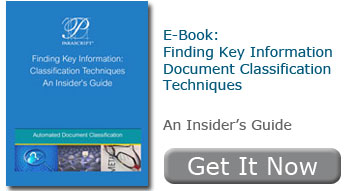
When it comes to successful information management projects, it’s not the technology that’s the problem. It’s the organizations that purchase and use it. At least, that’s what Laurence Hart maintains in his recent CMSWire article. Now Lawrence is a practitioner, and he’s seen firsthand how information management projects can fail or succeed. Personally, as a vendor, I place the onus on us—the software vendors—to provide solutions that ensure successful information management. We all know, though, that there’s truth to Hart’s argument. Most everyone has heard platitudes associated with the importance of proper execution. What Hart addresses is the need to organize the project better so that the team can execute on a single, well-defined mission.
Technology is definitely a major component in solving most of today’s problems. In addition, the selection, design, and implementation of that technology must follow a solid game plan.
When it comes to discovering, organizing, and describing document-based information assets, technology like our document classification platform can be used as assistive technology. It simply needs something to assist. One of the novel approaches we have taken is to build within our document classification software, the ability to search and discover groupings of documents without any preparation.
This original discovery approach allows an organization to find out what they don’t know and then move on from there. The result is a set of document groups that classification can then assist in further refinement without a lot of effort. This is called “document clustering.” Parascript document clustering can be an essential part of any information management or governance project. Even better, it doesn’t require a lot of staff or planning and can actually be a prerequisite to planning your project.

